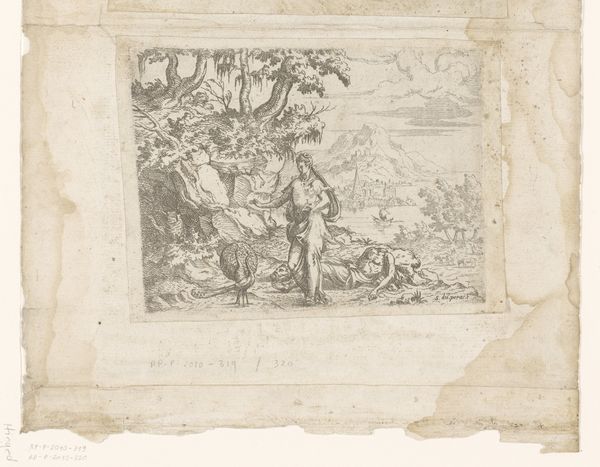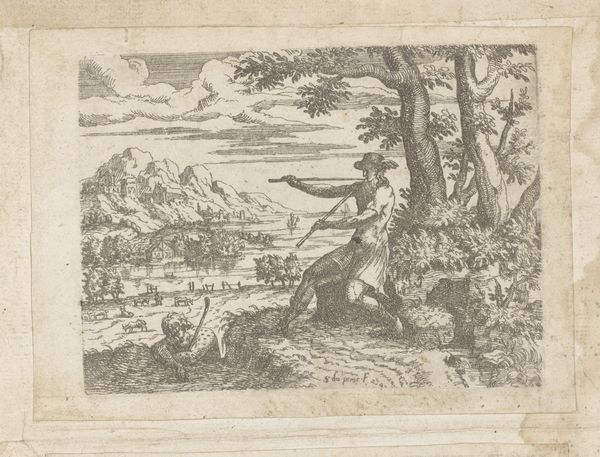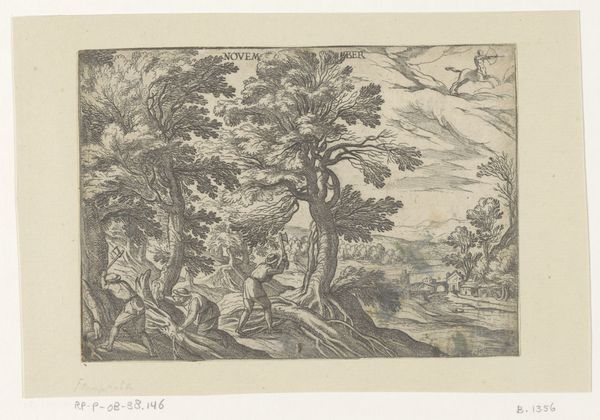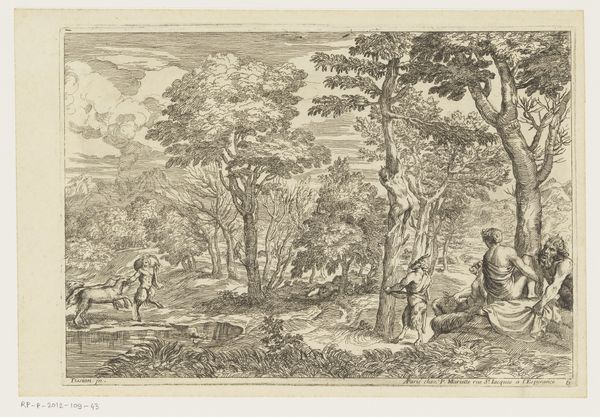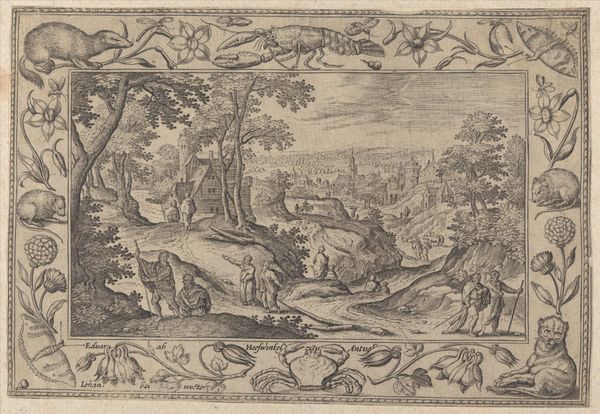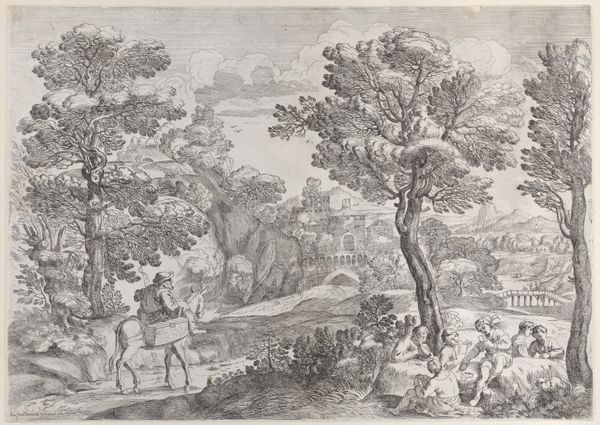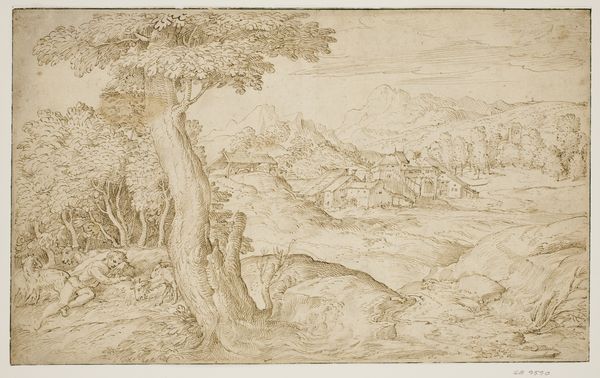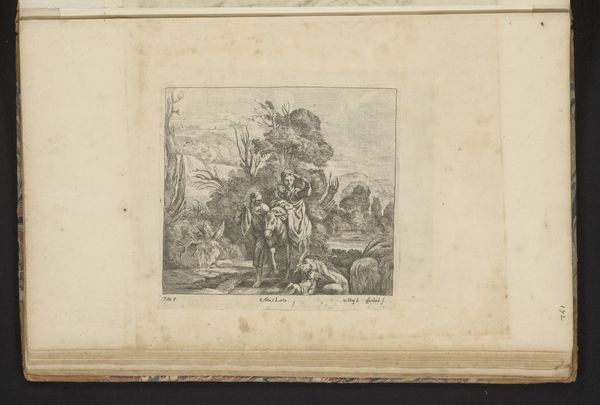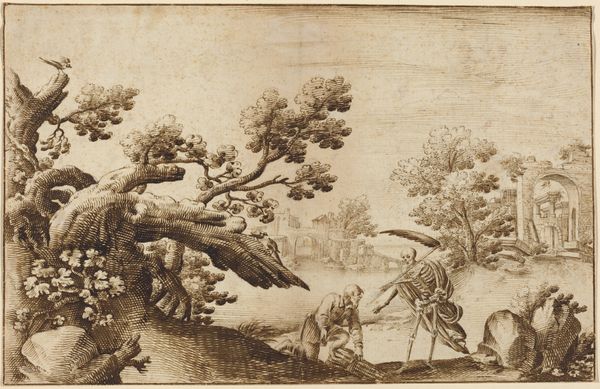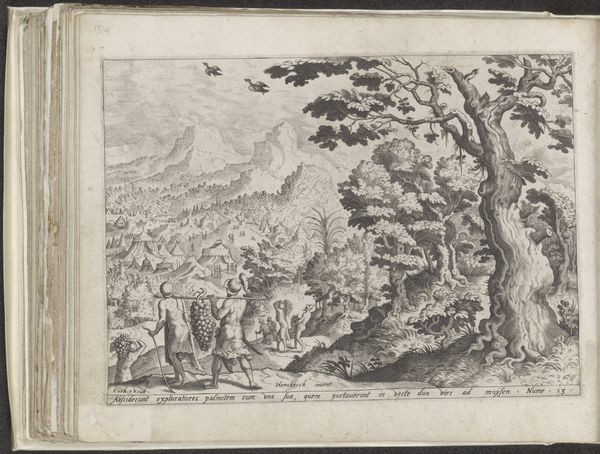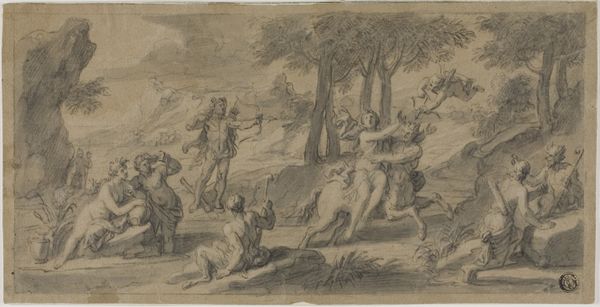
drawing, paper, ink
#
drawing
#
baroque
#
landscape
#
paper
#
ink
#
genre-painting
Dimensions: height 170 mm, width 274 mm
Copyright: Rijks Museum: Open Domain
Editor: This drawing, titled "Landschap met man en ezel," is attributed to Antonio Tempesta and dates from 1565 to 1630. It's ink on paper, currently held at the Rijksmuseum. It has such an interesting contrast in texture between the very smooth, clear sky, and the rough foliage of the trees and detailed construction of the buildings in the background. What strikes you most about this piece? Curator: Well, what immediately jumps out at me is the tension between the depiction of labor and leisure, both visibly rendered via the material properties of ink on paper. The careful detailing of the cityscape in the background is starkly juxtaposed to the crude depiction of a man toiling with his donkey. What does it say that Tempesta chose to present this mundane activity of labor against a grand, picturesque background? Editor: That’s a really interesting point. So, you're suggesting that Tempesta's choice of medium, and his application of it, deliberately emphasizes the disparity between the idyllic backdrop and the working-class figures? Curator: Precisely! And we must also consider the socio-economic implications inherent in the production and consumption of this artwork itself. Was this drawing intended for a wealthy patron who romanticized rural life from a distance? What meaning did the artist hope to covey? Or, to whom was Tempesta speaking with the production of this work? Editor: That makes me see it differently. The drawing becomes less about a romanticized landscape and more about highlighting the unseen labor that sustains it. I hadn't considered how the materials themselves speak to social stratification. Curator: Indeed. The very act of creating this image—the cost of the paper, the ink, Tempesta's time, even the conditions in which he worked—all contribute to a deeper understanding of its meaning. By analyzing the material processes, we uncover hidden narratives about labor, value, and consumption within the artwork itself. Editor: This really challenged my initial perception! Thank you, I've learned to look at artworks with new eyes and ears.
Comments
No comments
Be the first to comment and join the conversation on the ultimate creative platform.
